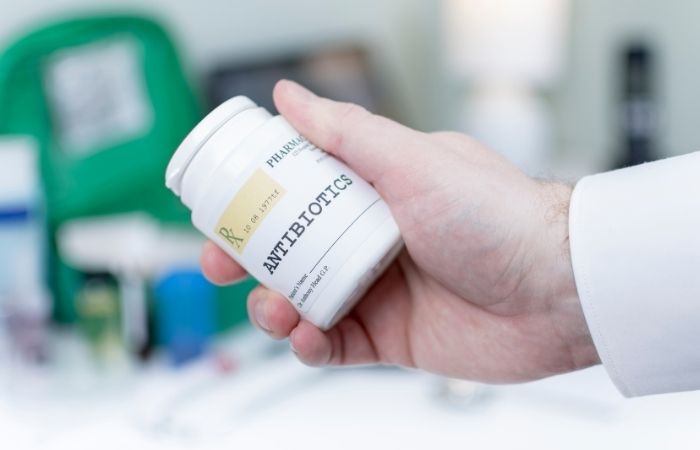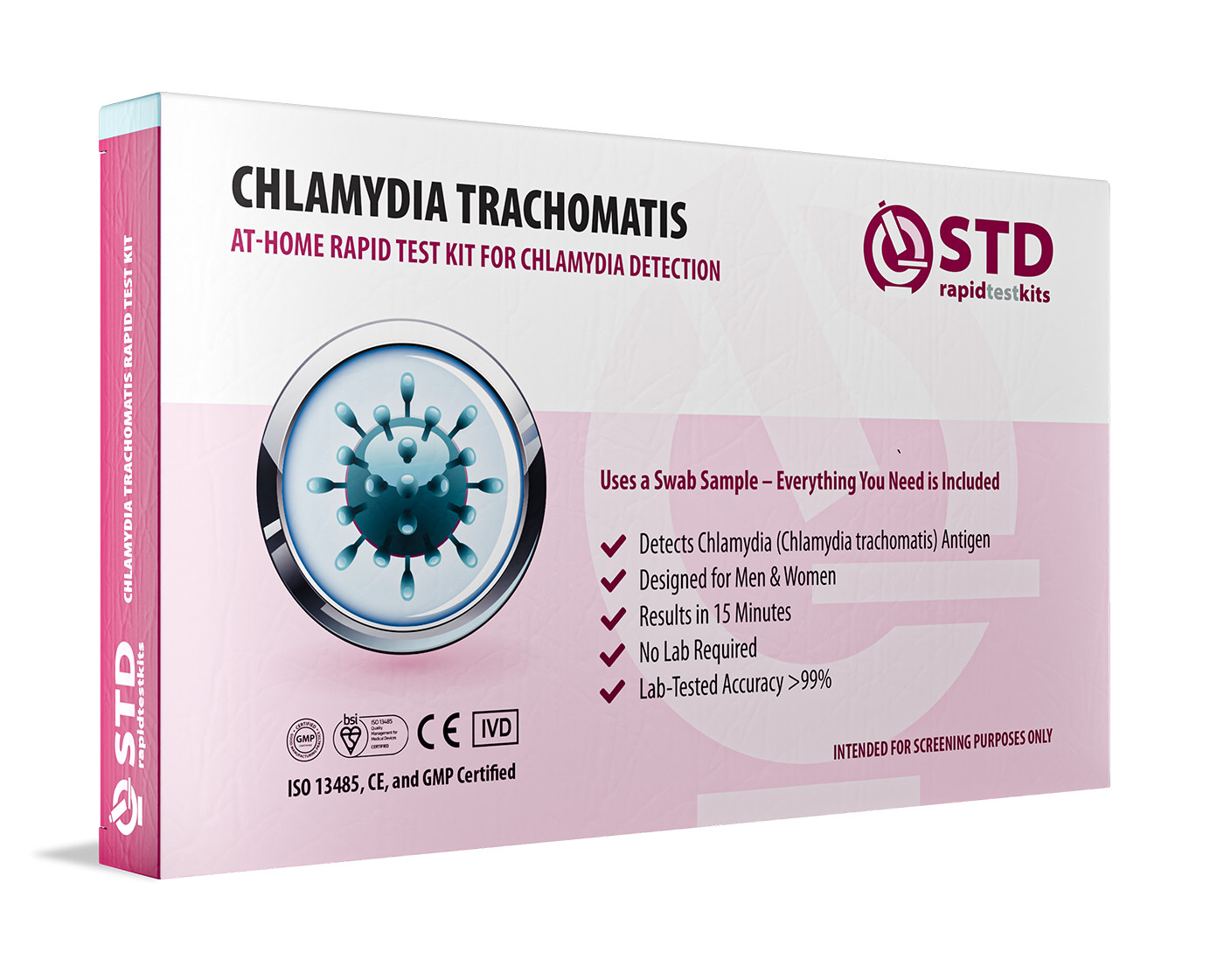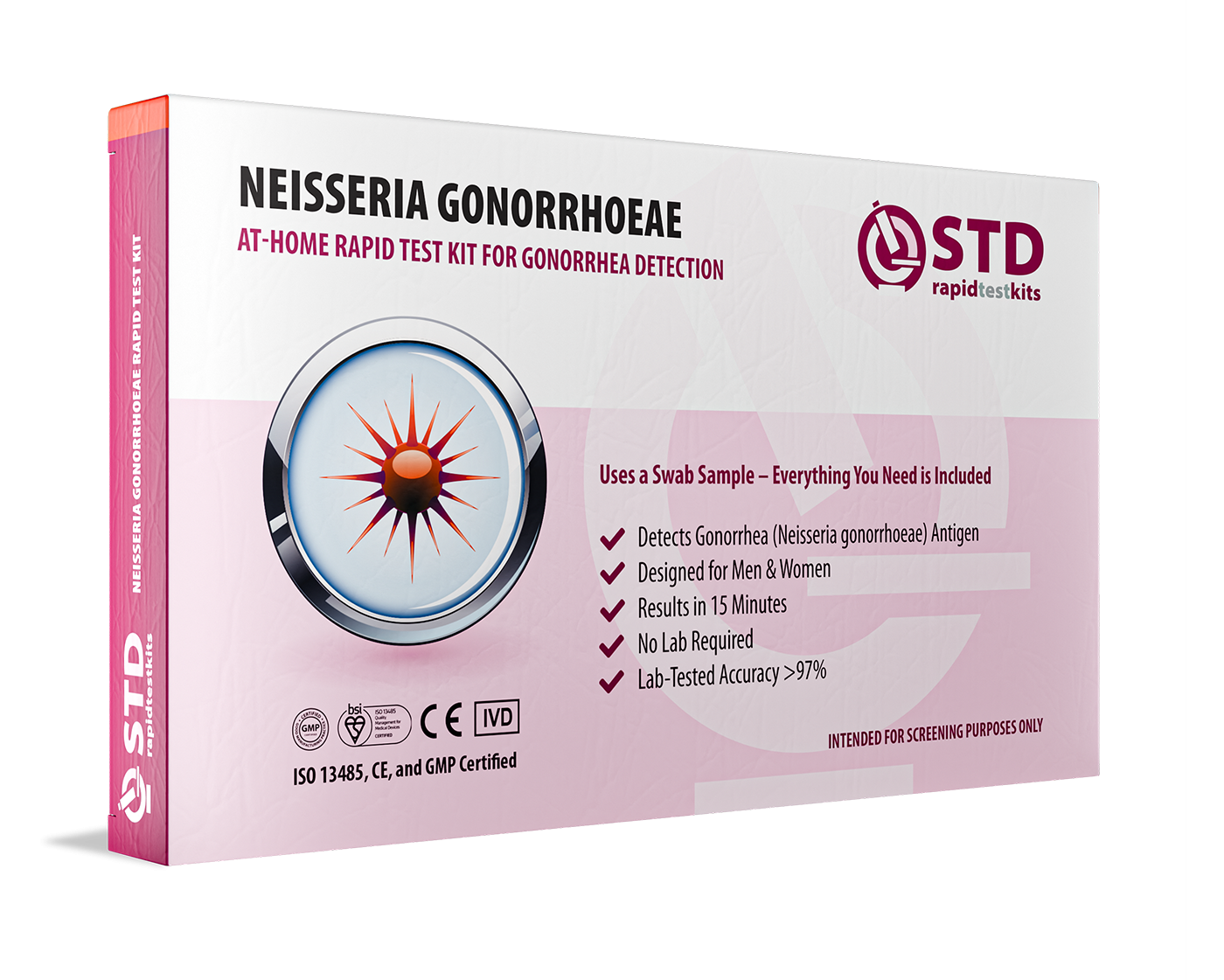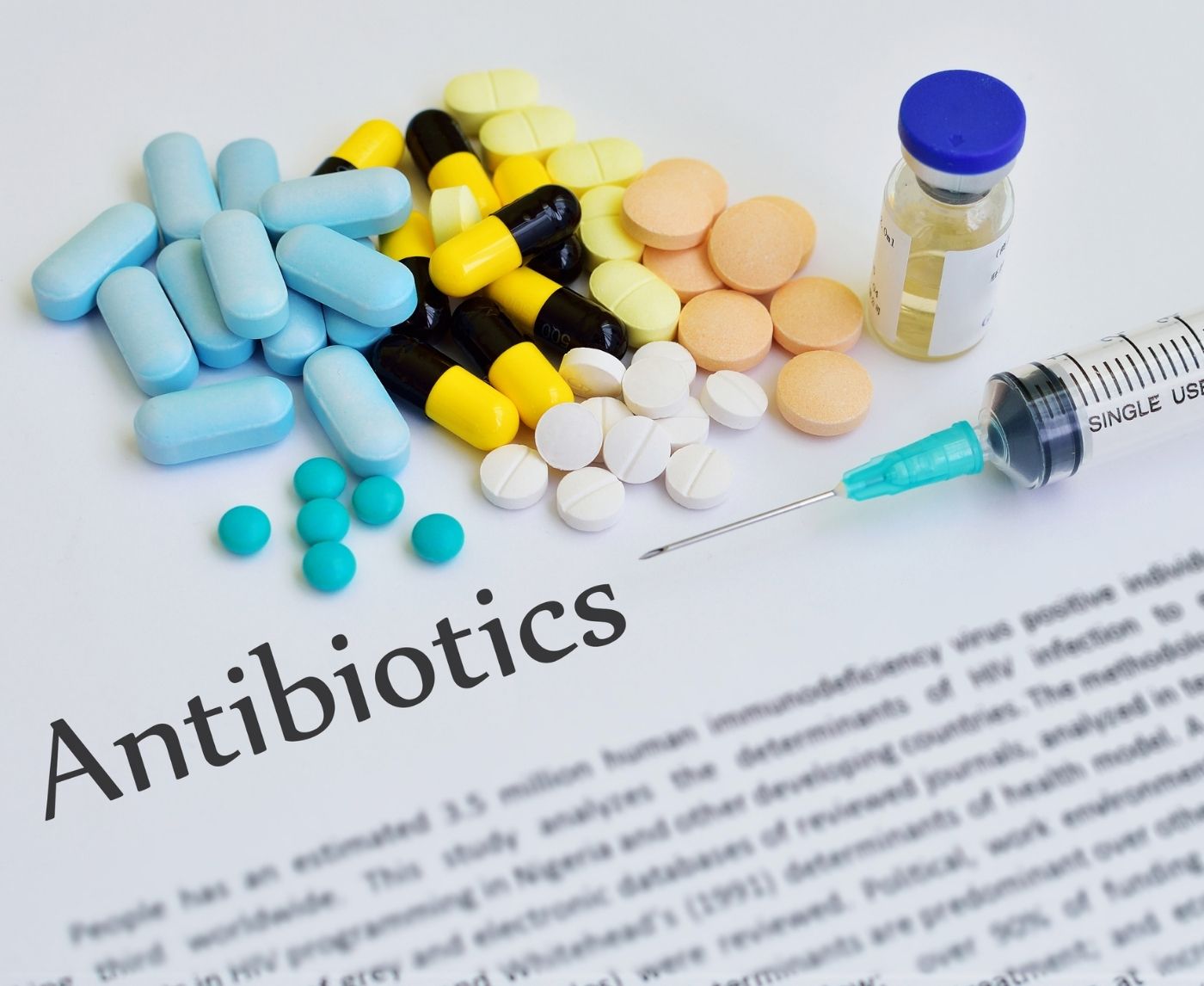Quick Answer: Antibiotics can disrupt your vaginal flora, reducing protective Lactobacillus bacteria, and make it easier for STDs like chlamydia to take hold.
“I Got Chlamydia After a Tooth Infection”
Sara, 29, had been dealing with a toothache that turned into a full-blown infection. “I was on antibiotics for ten days. I thought my only side effect was a mild yeast infection. A month later, I got tested before starting to see someone new, and it came back positive for chlamydia. I had no symptoms. I was mortified.”
“I couldn’t wrap my head around it. My dentist fixed my tooth, but I ended up with an STD? I hadn’t even been with anyone new in months.”
Her confusion wasn’t unusual. Few people are told that antibiotics, whether for a tooth, a UTI, or strep throat, can strip away healthy bacteria in the vagina, leaving the door wide open for pathogens. When Lactobacillus levels drop, pH rises, and infections from Chlamydia trachomatis to BV to gonorrhea have an easier time settling in.

People are also reading: How Chlamydia Can Affect Babies When the Mother is Infected
The Science: Vaginal Flora and STD Susceptibility
In a healthy vaginal microbiome, Lactobacillus species dominate. They produce lactic acid, hydrogen peroxide, and bacteriocins, natural antimicrobials that make the vaginal environment inhospitable to many sexually transmitted pathogens. Studies show that when this balance tips, a condition called bacterial vaginosis (BV) often emerges. BV itself isn’t an STD, but it’s strongly associated with increased risk of acquiring one.
Research from Microbiome Post found that women with BV had a 62% higher risk of chlamydia infection. The disruption, often triggered by antibiotics, creates a high-pH environment where protective bacteria die off and opportunistic microbes thrive. This makes it easier for STDs to take hold and, in some cases, persist even after treatment.
Antibiotics like azithromycin, doxycycline, and metronidazole are life-saving, but they’re also blunt instruments. They don’t distinguish between “bad” bacteria and the Lactobacillus you actually need. While some vaginal flora can bounce back quickly, other times it takes months, during which STD susceptibility is higher.
From Yeast to Chlamydia: The Post-Antibiotic Risk Shift
A lot of people already know that antibiotics can cause a yeast infection by killing the bacteria that keep Candida in check. But that's not the end of the connection. When Lactobacillus runs out, the change in vaginal pH doesn't just let yeast in; it also makes the vaginal lining more open to bacteria and viruses, including those that cause STDs.
This means that after taking antibiotics, you might be at a "triple risk" for yeast overgrowth, BV development, and a higher risk of getting STDs. If you have sex during this time, even low-risk encounters can lead to unexpected diagnoses.
Check Your STD Status in Minutes
Test at Home with RemediumChlamydia Test Kit

 For Men & Women
For Men & Women Results in Minutes
Results in Minutes No Lab Needed
No Lab Needed Private & Discreet
Private & DiscreetOrder Now $33.99 $49.00
Why You Might Test Positive Without Recent Sex
Here’s where it gets even trickier: certain STDs like chlamydia can lie dormant for weeks or months. You might get antibiotics for a completely unrelated condition, disrupt your vaginal flora, and suddenly a latent infection becomes detectable, or symptoms appear. That’s why timing alone doesn’t always explain a positive result.
The BV–STD Connection: What the Research Shows
Multiple studies have confirmed that bacterial vaginosis is more than just an uncomfortable inconvenience, it’s a biological setup for infection. A 2023 analysis published in Microbiome Post found that certain BV-associated bacterial communities, especially those dominated by anaerobes like Gardnerella vaginalis and Prevotella, can directly support the growth of Chlamydia trachomatis. The altered vaginal environment increases inflammation and reduces protective mucus, making it physically easier for pathogens to bind to and penetrate vaginal cells.
In fact, some research shows that these BV-associated microbes can produce byproducts like tryptophan metabolites, which chlamydia can use as fuel. This isn’t fearmongering, it’s simply a reminder that the microbiome is an active participant in your sexual health outcomes, for better or worse.
“We Were Monogamous. I Still Got Chlamydia.”
Lena, 34, had been married for eight years when she was diagnosed. “I had to get antibiotics for a sinus infection. Three weeks later, during my annual exam, my doctor suggested a full panel. I laughed at first, why would I need one? When the chlamydia result came back positive, I was devastated. My partner got tested and was negative. It was like we’d stepped into a medical mystery.”
“The hardest part was explaining to my husband that this didn’t mean I cheated. We eventually learned it could’ve been dormant for months, even years, and that my antibiotic use might have tipped the balance, making it flare up.”
This kind of scenario happens more often than most realize. Dormant infections, disrupted vaginal flora, and immune system shifts all intersect in ways that don’t fit neatly into the “cause and effect” timelines most of us expect.

People are also looking for: Can Gonorrhea Can Cause Arthritis?
When Good Bacteria Go Missing
In a balanced state, vaginal Lactobacillus species like L. crispatus and L. jensenii create an acidic environment (pH 3.8–4.5) that keeps yeast and harmful bacteria under control. After a course of antibiotics, especially broad-spectrum types, these protective bacteria can be wiped out. Without them, your vaginal pH can rise to 5 or higher, an environment where chlamydia, gonorrhea, and even HIV find it easier to establish infection.
A study published in Clinical Infectious Diseases found that azithromycin treatment for chlamydia shifted vaginal microbiota toward L. iners, a less protective strain linked to higher reinfection rates. In plain language: not all Lactobacillus are equally protective, and some post-antibiotic recovery patterns leave you more vulnerable than before.
Why This Matters for Your Sex Life
For anyone sexually active, understanding this connection means knowing your personal “window of vulnerability” after antibiotics. This is especially crucial if you have multiple partners, new partners, or engage in unprotected sex. Even if you’ve been careful, the loss of protective flora can make otherwise low-risk encounters higher risk.
It’s not about promoting fear, it’s about stacking the odds in your favor. That might mean delaying unprotected sex for a couple of weeks after antibiotics, adding barrier protection during that time, or proactively using probiotics (oral or vaginal) to help rebuild your flora.
Probiotics, pH, and Prevention
While the research is still emerging, several studies suggest that targeted probiotic strains, particularly L. crispatus, can help restore the vaginal microbiome after antibiotic use. Products like vaginal probiotic suppositories or oral supplements may support faster pH normalization and reduce recurrence of BV and yeast infections.
One systematic review found that combining antibiotics with probiotics for BV treatment led to higher cure rates and fewer recurrences. While probiotics aren’t a substitute for condoms or regular testing, they can be a valuable tool in your prevention toolkit.
Check Your STD Status in Minutes
Test at Home with RemediumGonorrhea Test Kit

 For Men & Women
For Men & Women Results in Minutes
Results in Minutes No Lab Needed
No Lab Needed Private & Discreet
Private & DiscreetOrder Now $33.99 $49.00
Test, Don’t Guess
If you’ve recently finished a course of antibiotics and you’re sexually active, especially if you’ve had unprotected encounters, it’s worth getting tested. The easiest option? Use a discreet, doctor-trusted at-home kit like the Chlamydia & Gonorrhea 2-in-1 At-Home Rapid Test Kit. You can check for multiple common infections without the stress of a clinic visit.
Your vaginal health is more than just “no symptoms.” Many STDs, including chlamydia, are silent but can cause long-term harm if untreated. Knowing your status is the first step to protecting your future fertility and peace of mind.
Recognizing the Warning Signs After Antibiotics
Not every post-antibiotic change is dramatic, but your body often sends subtle signals when your vaginal microbiome is off-balance. These signs don’t always mean you have an STD, but they do mean it’s time to pay attention, and possibly test.
- Itching or burning: Not just yeast, BV or certain STDs can cause this too.
- Unusual discharge: Grayish, thin discharge often points to BV; yellow-green may indicate trichomoniasis or gonorrhea.
- Odor changes: A strong fishy smell is common in BV, while chlamydia and gonorrhea may have no odor at all.
- Spotting or bleeding after sex: Can be linked to chlamydia or cervical inflammation.
- Pain during sex or urination: May signal multiple possible infections, from yeast to herpes.
Keep in mind that up to 70% of people with chlamydia have zero symptoms. That’s why waiting for obvious signs can delay diagnosis and treatment.
Clearing Up the Confusion
When it comes to post-antibiotic sexual health, myths abound. Let’s dismantle a few:
- “If I haven’t had new partners, I can’t have an STD.” False. Infections can lie dormant for months or years before showing up on a test.
- “Yeast is the only infection you get after antibiotics.” Not true, BV and increased STD susceptibility are well-documented risks.
- “Probiotics work instantly.” They help, but microbiome recovery can take weeks to months. Protection measures should stay in place during this time.
- “A negative test once means I’m in the clear forever.” Some infections can be missed if tested too soon after exposure, timing matters.
How to Protect Your Vaginal Microbiome After Antibiotics
Supporting your vaginal flora is about more than avoiding scented soaps or douching. It’s about understanding that antibiotics are sometimes necessary, but their side effects can be managed.
- Use barrier protection: condoms lower the risk of STDs during the recovery phase when you're most vulnerable.
- Use probiotics that are specific to you: You should look for oral or vaginal products that contain L. crispatus or L. jensenii.
- Watch your pH: Don't use harsh cleansers or scented wipes that change the acidity of your skin.
- Follow a diet that includes prebiotics. This will help keep the microbiome healthy as a whole.

People are also reading: Why Regular STD Testing is So Important
FAQs
1. Can antibiotics give you STDs?
No, antibiotics don't directly cause STDs. But they can change the bacteria in your vagina, which makes it easier for you to get an infection if you come into contact with it.
2. How soon after taking antibiotics am I more likely to get an STD?
The risk is highest in the weeks right after treatment, but it can take months for the microbiome to heal.
3. Will taking probiotics after antibiotics stop STDs?
Probiotics may help restore balance, but for the best protection, they should be used with barrier protection and regular testing.
4. Is it possible for BV to become an STD?
No, BV is not an STD, but it does make you more likely to get one.
5. Why did I test positive when I haven't had sex in a while?
Some infections can stay dormant or be hard to find, only showing up on a test later.
6. What types of antibiotics have an effect on the flora in the vagina?
Amoxicillin, doxycycline, and azithromycin are examples of broad-spectrum antibiotics that are most likely to affect healthy bacteria.
7. Do men also have changes in their flora?
Men don't have vaginal flora, but antibiotics can still change the bacteria in their bodies and make them less immune.
8. How do I know if my vaginal pH is wrong?
Changes in smell, strange discharge, itching, and infections that keep coming back are all common signs.
9. Should I wait to have sex after taking antibiotics?
It's a good idea to use protection or wait to have sex without it until your flora has time to heal.
10. Where can I get a private test?
At-home testing kits let you test yourself in private and cover all the bases.
Get The Clarity You Deserve
Antibiotics are often necessary, but their ripple effects on your sexual health are rarely explained in the exam room. Understanding how your vaginal microbiome protects you, and how to support it, can prevent confusion, anxiety, and unnecessary stigma. You don’t need to live in fear, but you do deserve the facts.
Sources
1. Vaginal microbiota may be linked to increased chlamydia infection risk
2. Impact of Azithromycin on Vaginal Microbiota
3. Probiotics in Vaginal Health: Systematic Review
4. Vaginal flora – overview and function










